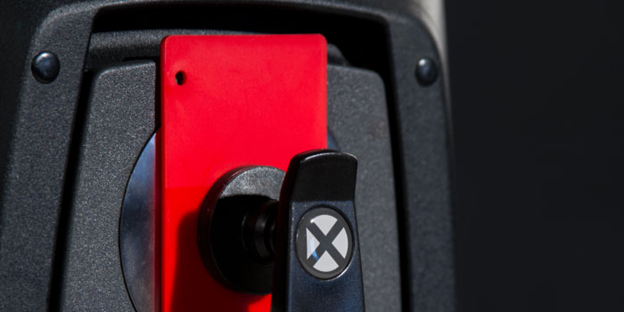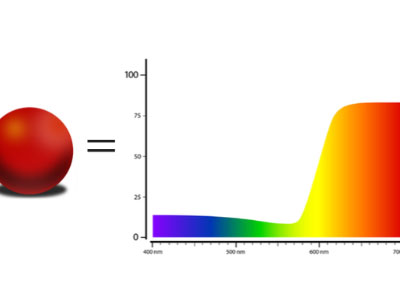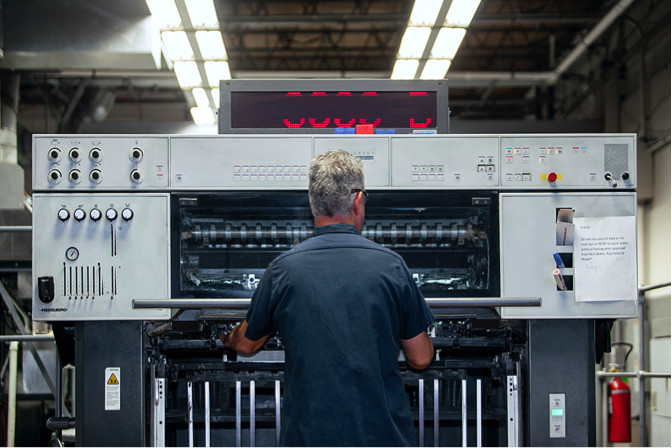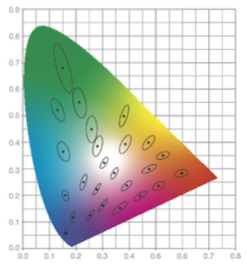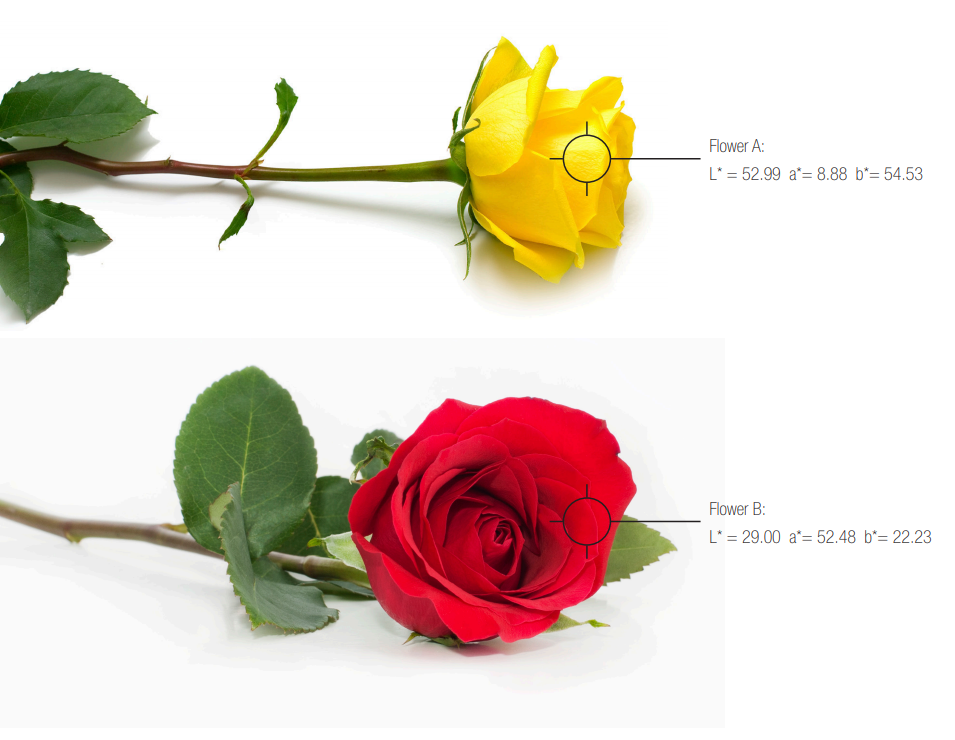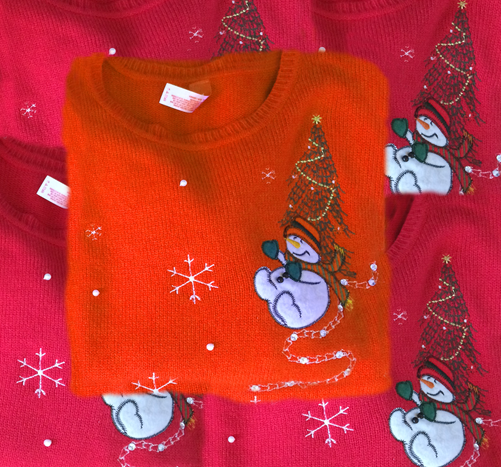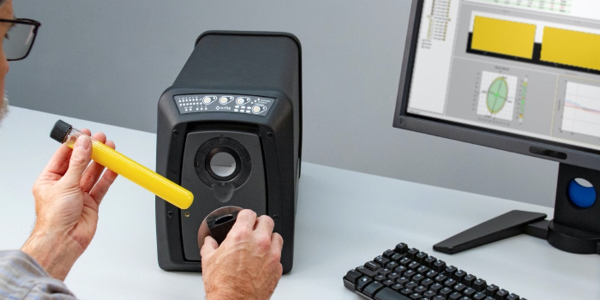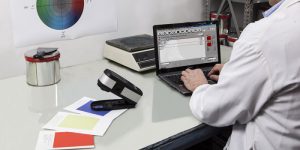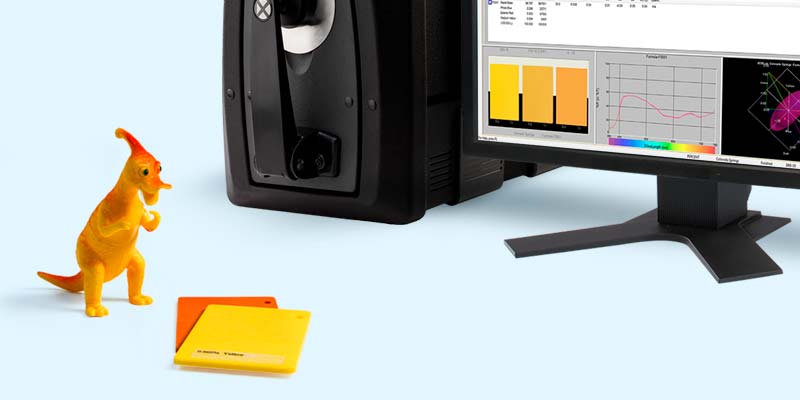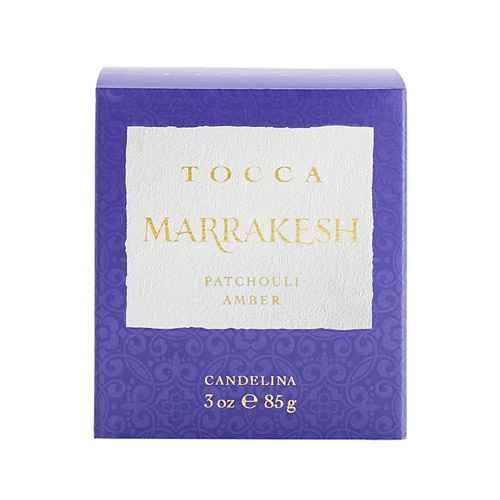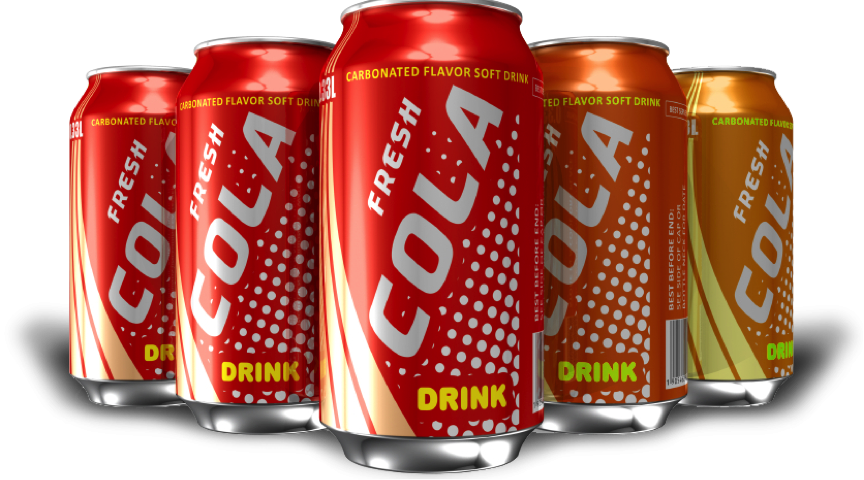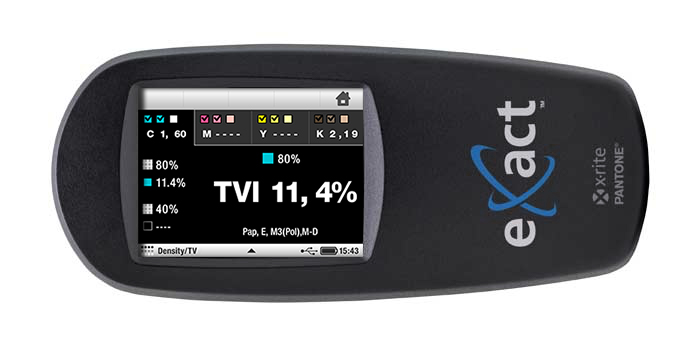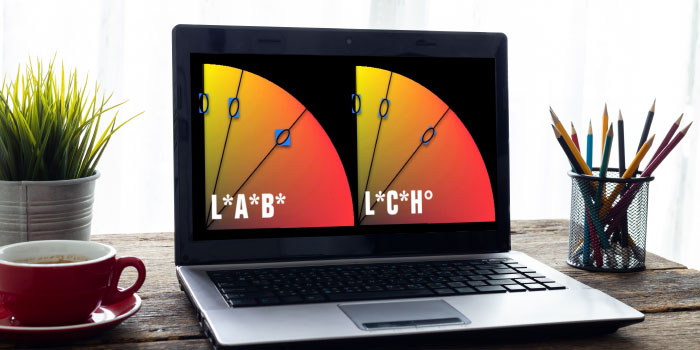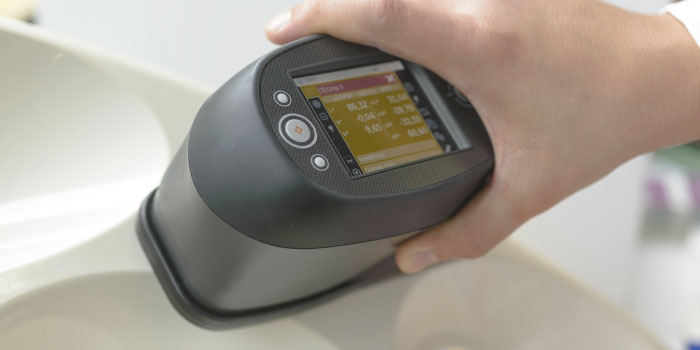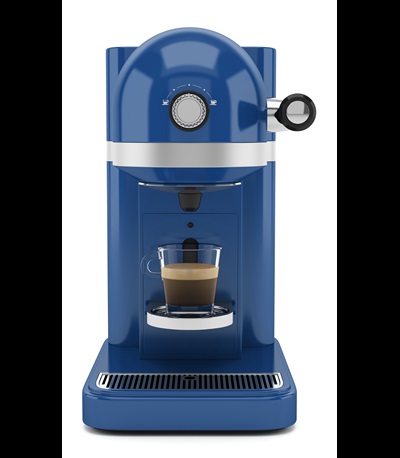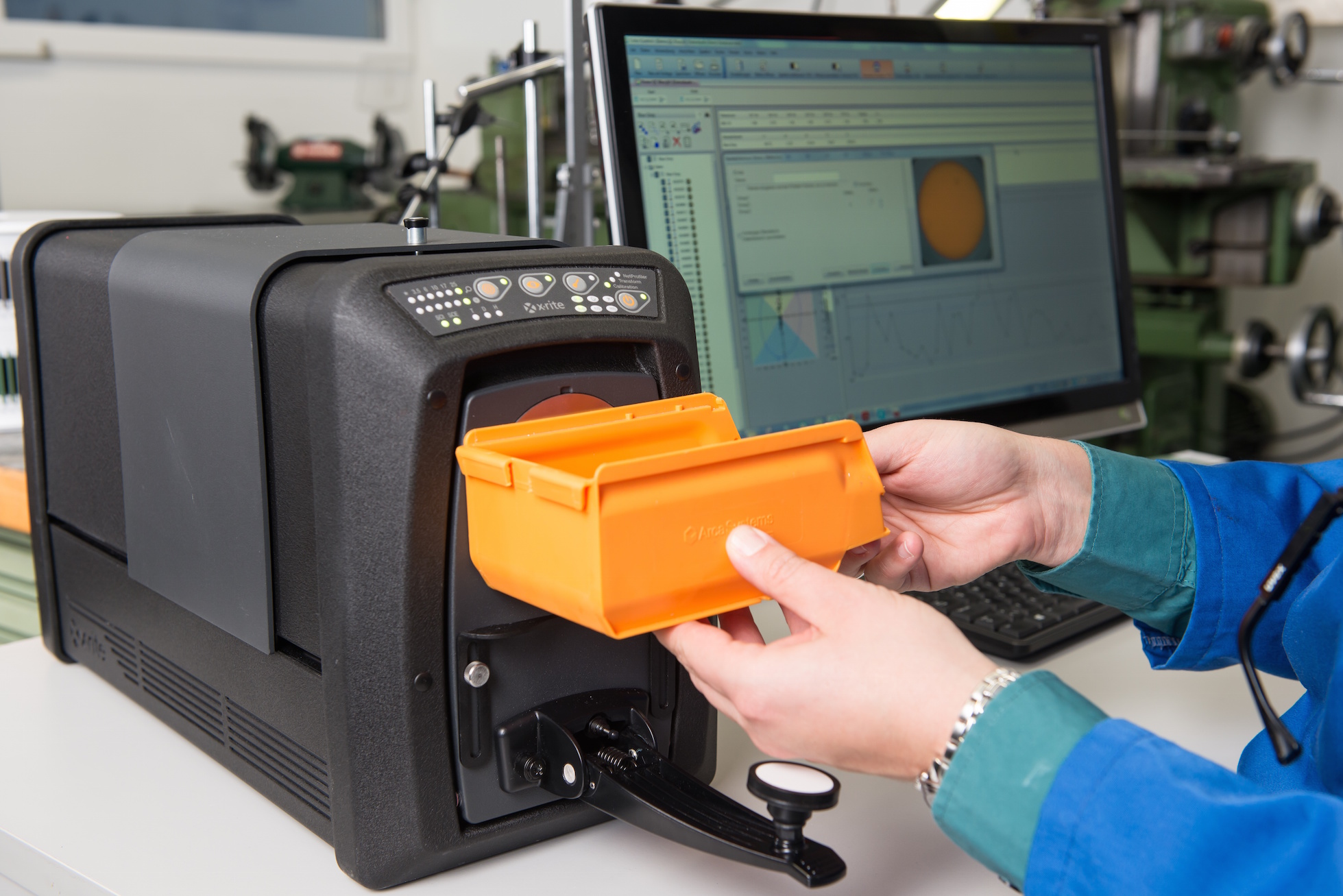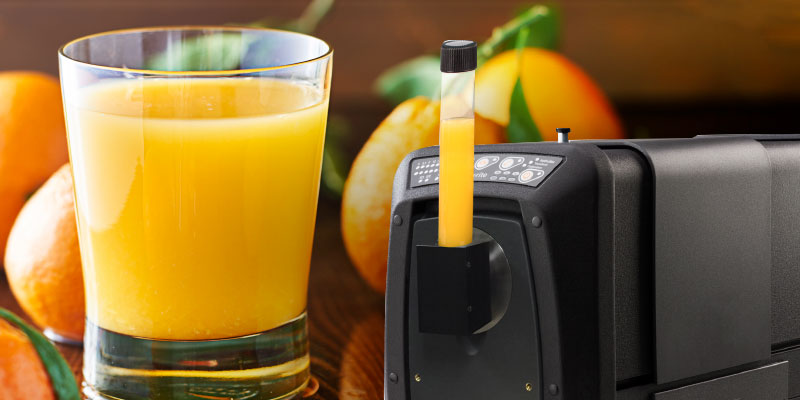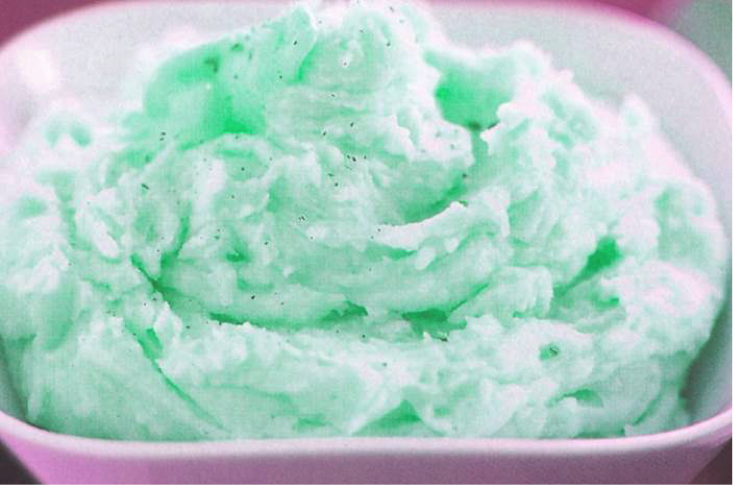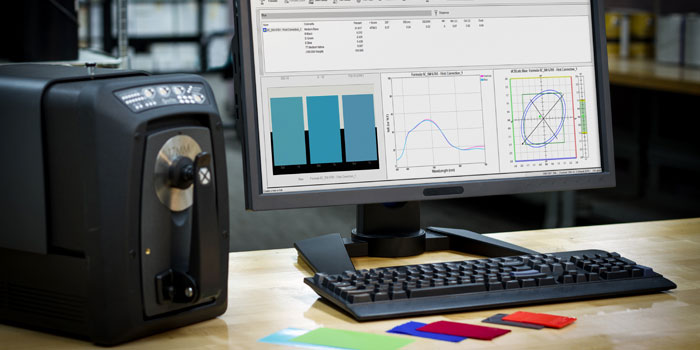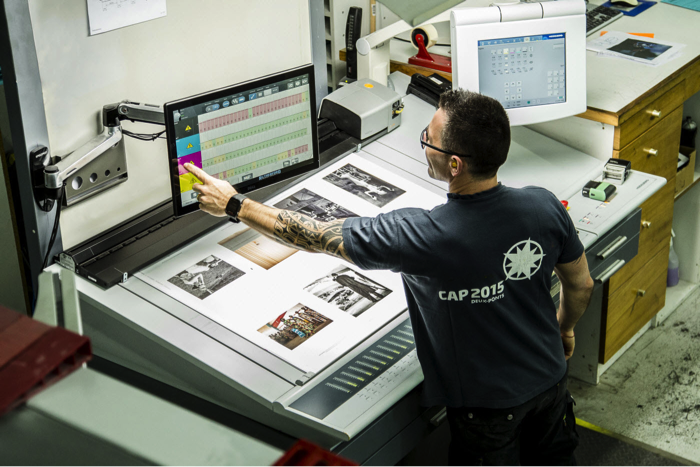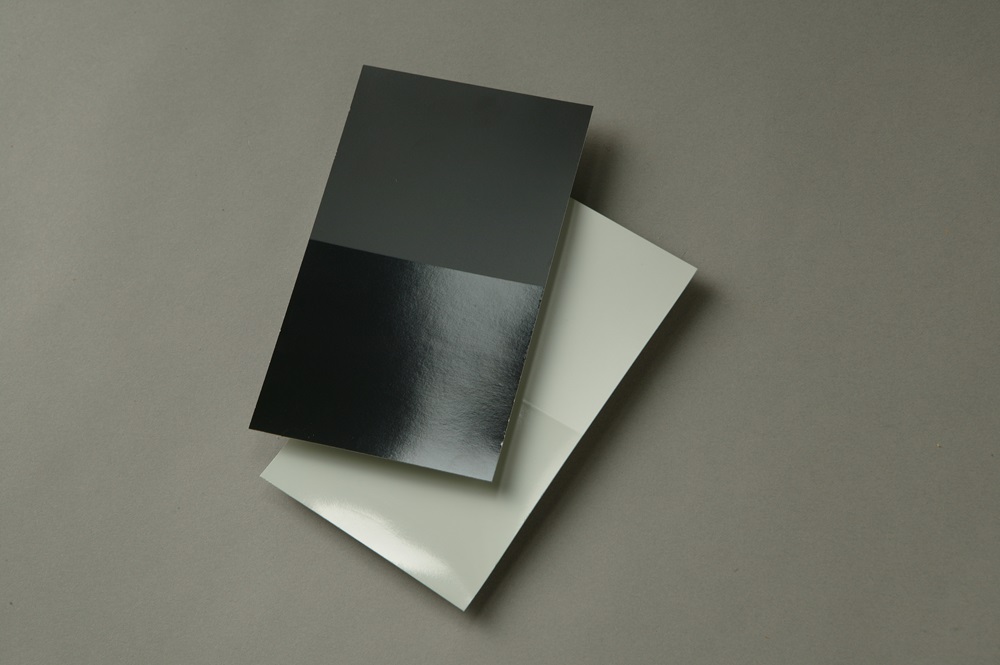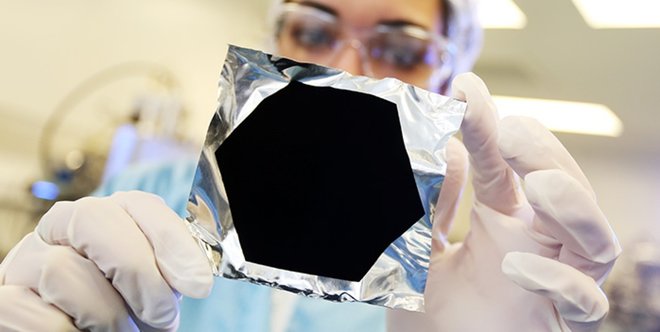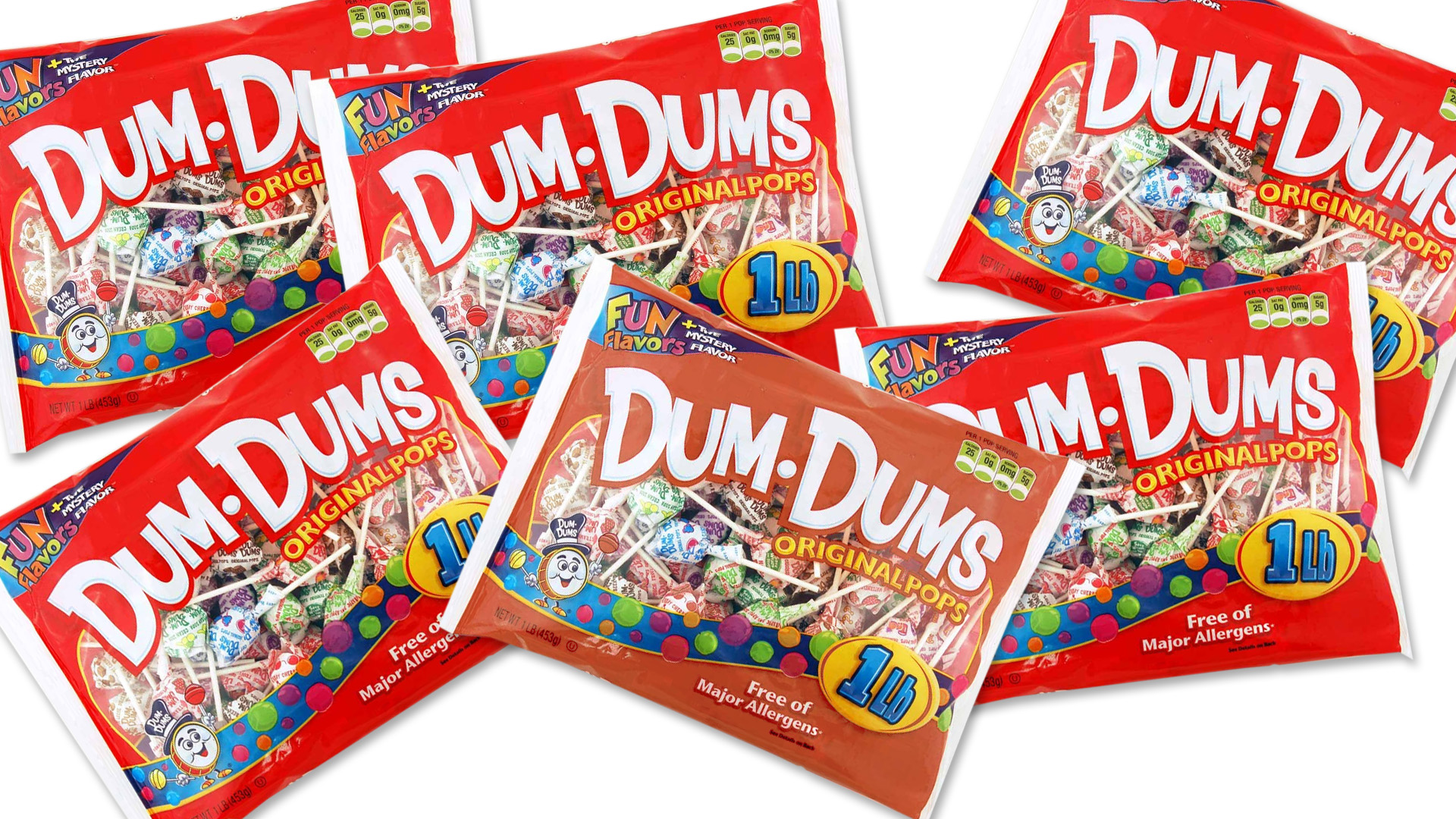Embracing Eco-Friendly Solutions for a Brighter Tomorrow In today's rapidly evolving world, sustainability has become a critical focus for manufacturers across various industries. As consumers become more environmentally conscious, the demand for sustainable practices in manufacturing has surged. This shift towards sustainability not only benefits the planet but also enhances business operations, leading to long-term success and resilience. One area where sustainability is making signific...
5 Things That Could Go Wrong Without an Automotive Spectrophotometer An automotive spectrophotometer is a critical tool in the automotive industry, especially when it comes to automotive color control. These advanced devices ensure that paint colors are precisely matched, consistently applied, and meet the required standards for automotive finishes. Without an automotive spectrophotometer, several issues can arise that impact the quality, efficiency, and overall satisfaction of vehicle paint jo...
Like you, digitization and sustainability are top of mind. However, colour is often overlooked when it comes to textile product development. Digitizing the textile supply chain and applying colour management at each stage will ultimately pay for itself through more accurate colour, faster production, and less waste. With over 60 years of innovation and proven expertise in colour management and colour measurement, X-Rite has solutions to support everyone in the textile industry, including appare...
This time of year, the internet is full of Top 10 Countdowns. It’s a tradition we’ve embraced since 1940 when the Billboard published its first chart ranking the top selling recorded songs. Since then, others have jumped on the bandwagon to highlight the most popular trends of the previous year. We’ve been publishing our top-read blogs since 2016, and we’re happy to see some educational topics like color perception, tolerancing, and spectrophotometers continue to r...
Color plays a major role in our food choices. Many foods like Swiss cheese, strawberries, broccoli, and mashed potatoes always look the same. We know what to expect when we take our first bite. But what if your mashed potatoes were green? Would they taste different? Would you even try them? Why Color Analysis is Important for the Food Industry There has been a lot of research about the role color plays in how we perceive and even taste food. These studies show that our judgment of f...
Whether you’re choosing colors for a brand, creating palettes for a new product line, or designing seasonal packaging, inspiration is a key step in color selection. Inspiration can come from normal, everyday places, for example: A party. The grocery store. Sporting events. And of course, the great outdoors. Mother Nature has a knack for creating the most beautiful color palettes. “Colors for Autumn/Winter 2022/2023 contrast our competing desires for calm and comfort with energy boost...
Why Calibrate Your Spectrophotometer? For the most part, today’s color measurement instruments are 100% digital. In fact, there are very few analog components inside, except for the light bulbs. Although they’re more stable than their analog predecessors, their tolerances are much narrower, and they need regular spectrophotometer calibration to stay within these tight specs. Bulb Stability As you use your instrument and the bulb turns on and off, it starts to change its character. S...
You say color is important, but do you know why it’s so important? In reality, color is a critical element in the manufacturing process. Unfortunately, many manufacturers are realizing that getting color right is much harder than it used to be, and the brands they support are asking them to meet tighter tolerances. Here’s why. While advances in color technology – think metallic packaging, pearlescent finishes, custom fabrics and vibrant new colors – entice customers, the...
When customers are just getting started with color management, they often ask, "What is the difference between a spectrometer and a spectrophotometer?". With such a minute spelling difference, it's easy to make a quick typo and get the wrong answer for this color question. So...what's the difference? Spectrometers vs. Spectrophotometers What is a Spectrophotometer? A spectrophotometer is a color measurement device that is used to capture and evaluate color on just about anything, in...
Benchtop spectrophotometers measure in transmission and/or reflectance mode to capture and quantify color on opaque, transparent, and translucent samples. Reflectance spectrophotometers measure color by flashing light onto the surface of the sample and measuring the percentage of spectral reflectance of different wavelengths at 10 nanometer increments. This blog explains how a spectral reflectance measurement works so you can determine if it will meet your color measurement and quality control ...
Quality control is an important aspect of any color workflow. While many of our customers use a handheld spectrophotometer for QC, there are times a benchtop spectrophotometer is a more appropriate choice. Today we’ll explore some of the reasons you might want to choose a benchtop for quality control and offer tips to ensure your QC workflow is the best it can be. Top 5 Reasons to Choose a Benchtop Spectrophotometer for Quality Control 1 - Your Color Tolerances are Tight While our handhel...
When choosing a beverage product from the store shelf, consumers not only demand superb taste, but also consistency in the way the beverage looks to the human eye. Color and transparency are essential markers for quality - any imperfection can indicate contamination, impurities in the raw materials, or process variations caused by heating and oxidation. However, drinks like fruit and vegetable juice, beer, and blended cocktails are difficult for manufacturers to control during production. Natura...
.upcoming-webinar-block { width: 100%; display: table; margin-bottom: 20px; } .upcoming-webinar-left { width: 120px; padding-right: 20px; display: table-cell; } .upcoming-webinar-left img { margin-top: 10px; } .upcoming-webinar-right { vertical-align: top; display: table-cell; } Color measurement devices have been around since the 1940s, but they’ve come a long way since then. Built by Jules Duboscq in France in 1870, t...
In a perfect world, you should be able to put ink in the press and simply run a job. Unfortunately, every year flexo and gravure printing operations waste ink, substrate and press time trying to get color right. Although advancements in technology have made it easier to achieve color accuracy, the variables that affect color still exist. In this three-part series, we're sharing over two dozen reasons your color might be wrong on press. If you missed the first article - Instrumentation - check i...
In a perfect world, you should be able to put ink in the press, run a job, and achieve color consistency. Unfortunately, every year flexographic and gravure printing operations waste ink, substrate, and press time trying to get color right. Although advancements in technology have made it easier to achieve color accuracy, the variables that affect color still exist. In this three part series we’ll share over two dozen reasons your color might be wrong at press side. Today’s topic lo...
Color measurement is used to specify, quantify, communicate, formulate, and verify color quality for color critical work. Because everyone perceives color differently, color measurement is more precise than visual evaluation. How to Measure Color Wavelength To measure color, a color measurement device called a spectrophotometer shines light onto a sample and captures the amount of light that is transmitted or reflected in the 380 nm to 780 nm wavelength range, which is the wavelength rang...
People often ask how X-Rite got its name and how we came to be a leader in the art and science of color. It’s really a great story – one that focuses on innovation, entrepreneurship and determination. What’s in a name? X-Rite was founded in 1957 by a group of engineers and business entrepreneurs who had a desire to start a business based on innovation. The members brainstormed new product ideas ranging from can openers to sheet metal tools to collapsible car cots. After buildin...
Surface appearance can change your perception of color. Think of a glossy magazine. If the light is shining directly on the page, you may need to tilt the magazine and change the reflection angle to clearly see the colors. Likewise, a textured surface may appear to be a different color than a smooth surface of the same object. Since spectrophotometers determine a color’s spectral values by shining light onto the surface and measuring the reflectance, choosing the right instrument an...
Each year we enjoy looking back to see which blogs captured the most attention. Some make the top 10 list ever year, while others are a surprise. Here's what our readers found most interesting in 2020. Top 10 Blogs of 2020 #1 L*a*b* Color Values Like geographic coordinates – longitude, latitude, and altitude – L*a*b* color values give us a way to locate and communicate colors. Learn the history and uses of this popular color space. #2 &nbs...
Black Friday. Not only is it the much anticipated start to holiday shopping, it’s also a day manufacturers have been preparing for all year long. Whether mass-producing holiday cards, candy canes, plastic toys, or festive clothing, accurate color is a must. Manufacturers can’t ship two of the same toy if they won’t match on the showroom floor, and holiday sweaters that are a shade off will end up at a discount store instead of a fashion boutique. Perfection is especially import...
The color of liquid is one of the most difficult things to control during production. But it’s important. Would you choose a bottle of juice or cleaner that is lighter in color than the other bottles on the shelf? What about cough syrup? Liquid is hard to measure because it can range in transparency from translucent to opaque. It’s also hard to hold, and the measurement device can’t touch it or the optics and the sample will both be contaminated. Today&rsq...
As brand owners compete to make packaging stand out, commercial and flexible packaging converters and label printers are charged with achieving accurate color – on unique substrates – with shorter print runs. Many spend a lot of time mixing ink, then end up throwing it away when the color isn’t right. Others mix ink, store it, and spend way too much time trying to reuse it for future print runs. If you’re stuck in this cycle, you’re essentially paying for ink...
Whether you’re producing textiles, automotive parts, or plastic pieces, color needs to remain consistent or the final product will be rejected. Unfortunately, there are many ways for color errors to creep in during manufacturing. Creating and using accurate digital color standards is one way to combat these errors. Digital color standards can be used in software to specify and communicate color, formulate colorants and raw materials, and control color quality. They give brand owners peac...
Whether you work with plastics, coatings or textiles, you must consistently achieve in-tolerance color or your product could be rejected before it even makes it to the shelf or showroom. This is especially true for brands that rely on off-site suppliers and manufacturers for raw materials and parts that come together at assembly, such as the plastic dashboard, fabric seats, and coated interior panels of a car. Even if each site produces in-tolerance color, it must be monitored an...
In a highly competitive marketplace, brands and packaging designers are looking for ways to differentiate their products on the shelf. This increasingly goes beyond color to include embellishment options such as foils, special varnishes, soft touch finishes, and more. Designers are also using more intense solid colors, fluorescents and iridescents, and not just with conventional print. Digital solutions allow more variation in packaging and the ability to address shorter runs and faster cycle ti...
Reflective surfaces and metallic inks are very popular for printing and packaging applications. Consumers love the look; but for printers, these substrates and inks are expensive and make color control a challenge. Today we’re taking a look at the measurement options available for controlling these very marketable print and packaging applications to help printers and converters meet brand owner expectations and maintain the highest possible quality output. Sphere vs. 45°:0° - ...
There are different levels of process control that are used for print. While visual comparisons can be used to provide a rudimentary judgment of a match, they can be very subjective, and thus not very accurate, or repeatable. Using a densitometer can provide quantitative actionable feedback for the press operator. This can include measurements of solid ink density, tone value increase (also known as dot gain), Ink Trap, and other print characteristics. These are known as mechanical print c...
Spectrophotometers (“spectros” for short) are color measurement devices used to capture and evaluate color. As part of a color control program, brand owners and designers use them to specify and communicate color, and manufacturers use them to monitor color accuracy throughout production. Spectrophotometers can measure just about anything, including liquids, plastics, paper, metal and fabrics, and help ensure that color remains consistent from conception to delivery. &nb...
Color has always been a critical factor for our customers. Due to the COVID-19 pandemic, many are now trying to design, specify, communicate and ultimately achieve accurate color from remote locations or with less staff and fewer resources. Are you having trouble maintaining your color program in this unprecedented time? We've compiled our most popular resources – blogs, videos, whitepapers, webinars, and case studies – to help you connect with your supply chain and ...
As with everything we touch, our color measurement instruments are prone to contamination from germs and viruses. Our Hardware Team consulted CDC advice and put together steps to disinfect your benchtop and handheld devices. Disinfection Warnings Do not immerse your device in liquid or apply any type of liquid directly on the instrument. Refrain from spraying disinfecting product directly onto the instrument surface, including foam disinfectants. Do not use product...
Appearance is more than just color. It’s an all-inclusive look at everything inherent to an object, including texture, gloss, transparency, translucency, and special effects like sparkle and shimmer. When viewed from different angles or under different lighting conditions, appearance effects can change our perception of color. That's why it’s important to control both color and appearance throughout design and development. Durable goods brands use appearance effects to captur...
Managing color throughout production is always a challenge, but advances in color technology, like the metallic, shimmer, and pearlescence effects designed to capture consumer attention, are taking the frustration to a whole new level for quality control managers. This is especially true when producing parts that must match at assembly, such as the metal panels for a home appliance or the painted side mirrors for a vehicle. Special effects are tricky to control because our perception can c...
Colorimeters and spectrophotometers are color measurement devices that are used to capture, communicate, and evaluate color. From cardboard packaging to food, laundry soap, carpeting and small plastic parts, color measurement devices help ensure the color being produced matches the color that was originally specified. They’re used behind the scenes in just about every industry where color is important, including plastics, textiles, paints, coatings, print and packaging. There are basicall...
Inter-instrument agreement is a very important consideration when selecting color measurement devices for your workflow. Unfortunately, it’s such a technical topic that it leads to a lot of confusion about what it means and why it’s important. The Ci7860 sphere benchtop spectrophotomter is has an inter-instrument agreement specification of 0.06 average Delta E*, enabling brands to create the most precise master color standards. Today we’re making it as simple as possibl...
Although plastics professionals have been managing color issues in the production workflow for many years, the dynamics are once again changing. From consumer electronics to automotive parts and flexible packaging, a growing number of brands are incorporating special effect finishes into their products. While metallics, pearlescents, and other complex finishes are beautiful and help brands stand out on the shelf, they also introduce new color management challenges into the manufacturing pro...
Spectrophotometers are excellent tools for measuring samples against their color standards to compare differences, but it can be difficult to achieve color accuracy for irregularly shaped products like liquids, plastics, cans, and powders. We design a variety of parts and accessories - also called “rigs & jigs” - for many of our instruments to help measure odd shapes and sizes. Parts & Accessories for Benchtop Spectrophotometers Liquids are notoriously difficult ...
Spectrophotometers are color measurement devices that measure color to ensure it remains consistent from the time it’s specified until final quality check. They can be used to measure everything from liquids and plastics to paper, metal, and fabrics for just about every industry. Here Are Our Top Spectrophotometer Picks for 2019. Best Spectrophotometer to Create Digital Standards Using a digital standard is the most accurate way to specify and communicate color, des...
When choosing a food product, consumers demand consistency in both taste and appearance. While a lighter batch of oranges may still produce a delicious juice blend, a pale color can jeopardize USDA approval and leave consumers questioning the quality. Unfortunately for food and beverage manufacturers, the color of food – especially drinks like fruit juice and blended cocktails – is one of the most difficult things to control during production. Here’s why. 1. Liquid is hard to...
There’s been a lot of research around the role color plays in how we expect food to taste. The fact is, we judge flavor by the color of the food or drink, even before the first taste. We expect red foods to taste sweet like strawberries or cherries. White should taste like vanilla, and green is probably limey and tart or minty. Color cues can even determine whether we take that first bite. Most of us won’t even consider trying a food like mashed potatoes or pumpkin pie if it is ...
With so many requests for innovative bases, transparency, and special effects, formulating color for paint, coating, and plastic applications can be a challenge. To keep up, formulation software needs to be innovative, too. We recently launched version 10 of our Color iMatch formulation software, and it is our smartest version yet. It allows you to select cost-reducing parameters, such as lowest cost or fewest colorants, and will determine the best formula for your application. It work...
It’s expensive to ship the wrong color. To make it right, you need to bring it back to the lab for reformulation, send someone to re-tint at the customer site, or dispose of it and start over. In addition to the expense of wasted time and materials, how do you quantify the loss of an unhappy customer? Five Steps to Efficient Formulation With the right tools and processes, you can work fast and achieve precise matches in industrial paints and coatings. 1. Formulate Against...
Hitting offset lithographic color targets isn’t always fast or easy. The manual process of measuring color bars and making ink key adjustments takes time and opens the door to operator error. Meanwhile, the press is running (and wasting) paper and ink. To achieve accurate and repeatable color, printers need to convert their printing operation to an efficient manufacturing process and drive efficiencies in all phases of their operation. For many, a closed-loop automated solution is the...
Benchtop spectrophotometers measure in either transmission or reflectance mode to capture and quantify color on various opaque, transparent, and translucent samples, including glass, liquid, fabric, and plastic. Today we’ll explain the difference between transmission and reflectance measurements so you can determine which benchtop will meet your color measurement needs. Transmission vs. Reflectance Measurements Both transmission and reflectance spectrophotometers emit all of the wav...
The two most common spectrophotometers are the 0:45 and the sphere (aka diffuse/8°). We get a lot of questions about which is the best choice. Here’s the difference in how these two devices measure color, and guidelines for when to use each. 0:45 In a “fixed geometry” or “single angle” device, the first number is the starting point of the light, and the second number is where the light ends up after the reflection off the surface of the sample. In a 0:45 ...
If you work behind a paint counter, you know customers can surprise you with interesting and unique objects to color match. Many samples are relatively easy to measure, but when a customer shows up with a curved baseboard panel, a square of shag carpet, or a plush toy, things can get a little tricky. A few years ago, we learned just how challenging it was for our retail paint customers to color match unique samples. We took in a bag with textured and multi-colored items and asked the person behi...
Whether purchasing a new car, consumer electronics, or household appliances, color consistency influences the perception of quality. If the color doesn’t match from front-to-back and side-to-side, customers will likely question the quality and move on. That’s where color measurement can help. In today’s competitive marketplace, manufacturers are going beyond color to utilize extreme effect finishes to differentiate their products. But, as manufacturers are quickly learning, me...
The World Series starts next week. While players and fans are gearing up for the big event, stadium groundskeepers are preparing, too. You’ve surely seen those meticulous patterns in the grass – crisscross, spiral, plaid – but do you know how the groundskeepers create them? Thanks to a phenomenon called geometric metamerism (aka gonio-appearance), the grass really is greener on the other side. Read on to learn more about this optical illusion that can trick your eyes and wreak havoc on y...
Color is our perception of reflected light across the visible spectrum. When light hits an object, it absorbs some rays and reflect others. The color of light that reflects back into our eyes is the color we perceive. The more light an object absorbs, the darker it appears. With black, very little light is reflected. Pure black in the presence of light wasn’t achieved until 2014 when Surrey NanoSystems announced the invention of Vantablack. This high-tech artificial substance absorbs 99....
We frequently get calls from customers who can’t figure out why their measurements vary, even when they’re using maintained devices. Why would a sample read one way one day, then slightly different another? Many times the culprit is thermochromaticity, and it becomes an even bigger problem as the seasons change. Every kind of material changes color with temperature. These changes cause the material to exhibit a shift in reflected wavelengths of light, which can alter our perception....
Have you ever sent out a job that passed your inspection, only to have the customer reject it for out-of-tolerance color? You recheck the data and the instrument says the color passed the agreed tolerance… why is the customer saying it doesn’t? We get a LOT of these conflicting measurement calls in technical support. The solution is simple – document a color control program that clearly defines how to assess color, then make sure everyone (including your customer) follow...




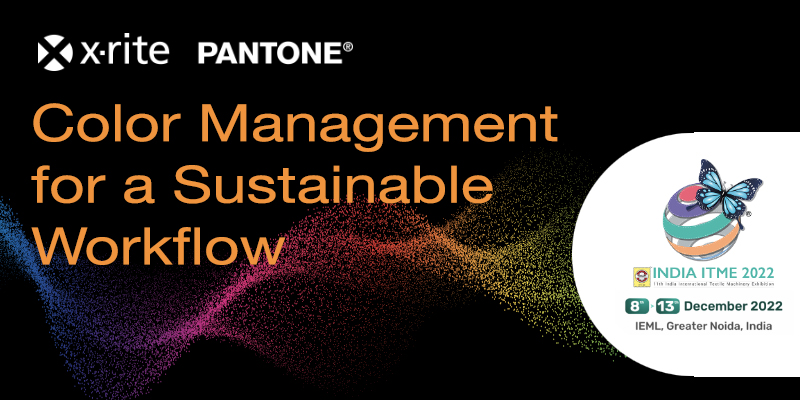
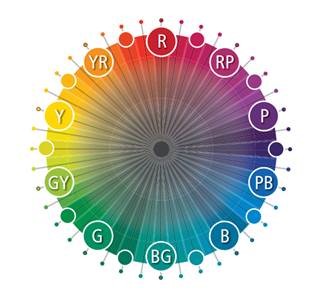

.jpg?h=285&la=en&w=400&hash=CF098B5757EE43CE3966F416E1D31AE6A67A8104)

.jpeg?h=285&la=en&w=400&hash=6F4520F30E11DA92838E11C8E55C4BFB32664563)

